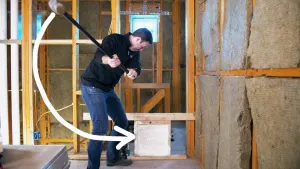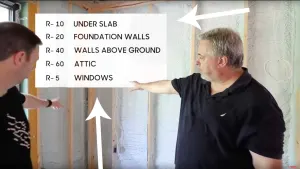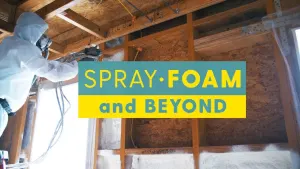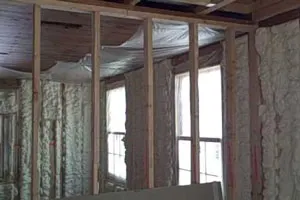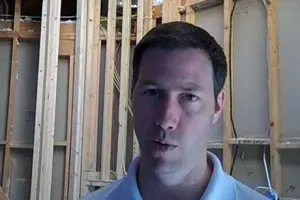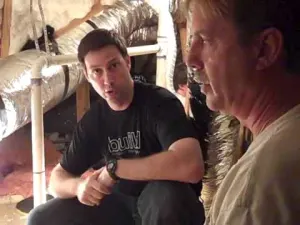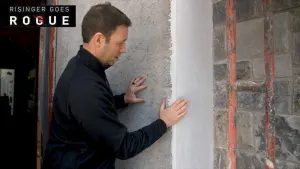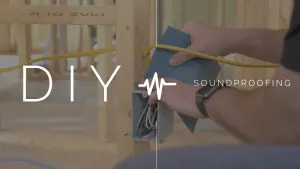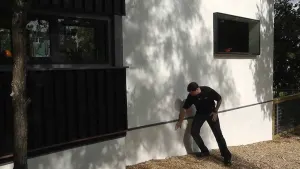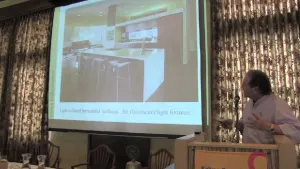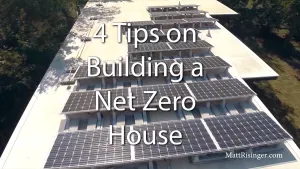Rising energy costs are just one of the motivating factors that have builders implementing exterior insulation in the homes they’re building. Builders are always looking for ways to improve the way they insulate homes. Exterior insulation helps to control moisture on the outside and brings homes’ insulation performance well beyond current building codes. Adding exterior insulation brings a lot of value to the house when compared to only cavity-based insulation. In many climate zones, it has even become code to add exterior insulation to new builds.
The use of rigid foam insulation boards for exterior insulation has been the pick for many years. But another product has been on the rise, proving to be even more efficient, with even more benefits – mineral wool such as ComfortBoard 80 manufactured by Rockwool.
With many exterior insulation options, how do you decide what’s right for a specific project?
Let’s compare traditional rigid foam insulation to the increasingly popular mineral wool.
Rigid Foam Insulation
Rigid foam insulation has become quite popular among builders who choose to utilize exterior insulation. It cuts easily and is attached over the weather resistant barrier to the sheathing. Its air barrier, R-value, and size varieties have contributed to its rise in popularity. Polyiso has been said to possess one of the highest R-values of any insulation, but we’ll look at this in more detail below. Finally, a number of these products include a foil radiant barrier, which is popular in the hotter climates.
Mineral Wool Insulation
ComfortBoard, mineral wool insulation is a form of insulation made of rocks. The insulation is comprised of 40% recycled materials and contains no blowing agents or CFCs (so nothing to off-gas). This very “green” product comes along with many benefits, which I’ll share below, and comes in easy-to-use batts that can be easily attached to the sheathing.
While the argument can be made for either insulation choice, I’ll give you eight reasons to opt for mineral wool instead of polyiso for exterior insulation.
- It’s fire resistant
ComfortBoard insulation won’t burn or release toxic gases or smoke when exposed to high heat. It also helps delay the spread of fire and is fire-resistant up to 2,000 degrees. (Run a flame up to it and see for yourself, like I do in this video).
- There’s no drift in R-value
While polyiso boasts an R-5 or R-6, it will likely lower over time, but with mineral wool you’ll see no expanding or contracting. It will stay rigid. In comparison, when using polyiso you’ll need to implement layers because it will shrink over time. - It will not harbor mold growth
Since Rockwool products are inorganic, they provide zero sources of food for mold to grow. They also meet ASTM C1338 standards for determining fungi resistance and pass with zero fungal growth. - Insects do not like it
Alternatively, polyiso tends to attract bugs, and ants can tunnel through easily. - It’s vapor permeable
ComfortBoard insulation allows for greater outward drying. Changes in temperature do not affect the moisture control. - It’s water repellant
While it looks like a fiberglass bat that would absorb water, Rockwool insulation does not. Instead, water just runs off, without absorbing. - It has sound absorption properties
Like Rockwool’s sound bats that are used inside homes, Rockwool exterior insulation cuts down noise transmission from outside the house, such as highway noise and loud city transportation and emergency vehicles. - It’s easy to install
Did you know you can cut Rockwool insulation and install it in just one layer? Compare that to polyiso installation where you’re dealing with foam sheathing fastened to framing with nails, wide plastic washers or adhesive caulk.
Depending on your project, insulation needs vary, but exterior insulation is becoming not just the norm but also a necessity. If you’re going to blanket a house, do it with a product made from recycled materials that will add a new level of efficiency to your home.
Sponsored by Rockwool

 Share on facebook
Share on facebook Tweet
Tweet Email
Email Share on Linkedin
Share on Linkedin


